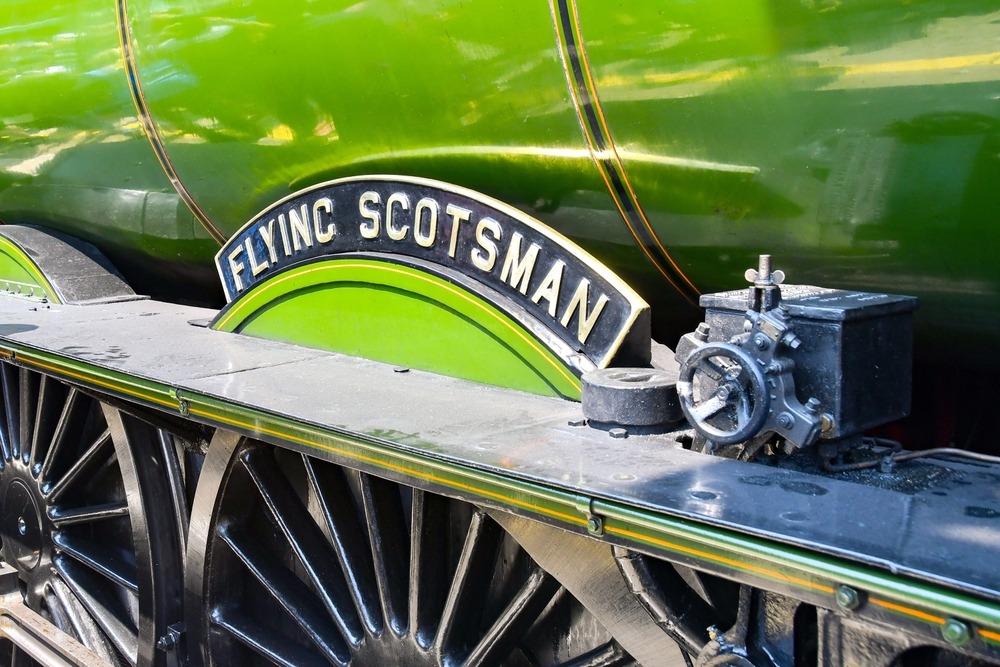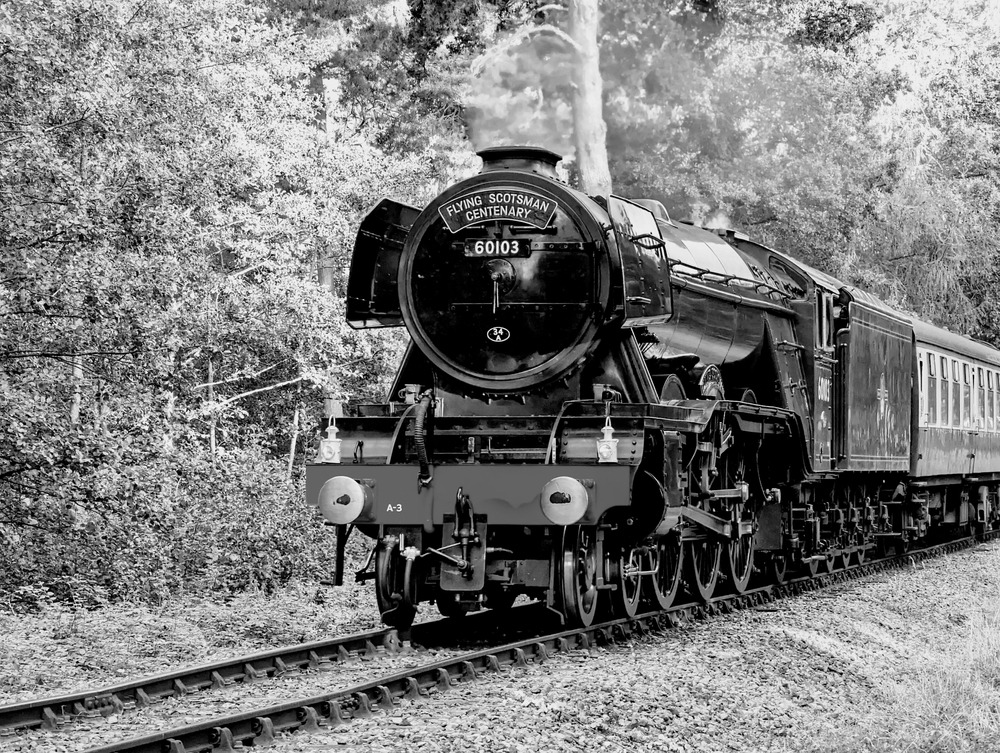The Flying Scotsman: A Legendary Locomotive in Railway History
The Flying Scotsman is one of the most iconic steam locomotives in the world, representing a golden era of British railway history. Since its debut in the early 20th century, this magnificent machine has been a symbol of engineering excellence, speed, and the romanticism of rail travel. Its fame extends beyond railway enthusiasts, capturing the imagination of people worldwide. In this comprehensive blog post, we will explore the history of the Flying Scotsman, its significance in rail history, and its enduring legacy.
The Origins of the Flying Scotsman
The Flying Scotsman locomotive was designed by Sir Nigel Gresley, one of the most renowned locomotive engineers of the time. It was built in 1923 by the London and North Eastern Railway (LNER) at Doncaster Works and was designated LNER Class A1, later reclassified as Class A3. The engine, numbered 1472, was an immediate success, showcasing the power, speed, and innovation that would characterize the locomotive’s long and illustrious career.
The name “Flying Scotsman” originated from the daily non-stop train service between London King’s Cross and Edinburgh Waverley, a journey that began in 1862. This service was one of the longest-running and most prestigious in the UK, and the locomotive bearing its name was designed to be a perfect match for the route’s grandeur and demands.
A Record-Breaking Speed Machine
One of the most notable achievements in the Flying Scotsman’s history came in 1934 when it became the first steam locomotive to officially reach 100 miles per hour (mph). This milestone, achieved on a test run near Stoke Bank, was a major breakthrough in railway technology at the time and cemented the Flying Scotsman’s place in history as a record-breaker. The locomotive’s speed and reliability made it the pride of British engineering and earned it worldwide recognition.
At its peak, the Flying Scotsman was part of the prestigious daily service that connected London and Edinburgh, a distance of 392 miles. This route became known as “The Race to the North,” as rival companies and trains competed to offer the fastest service between the two cities. The Flying Scotsman, with its impressive speed, helped cut down journey times, eventually allowing for a non-stop service that drastically shortened the travel time for passengers.
Technical Innovation and Design
The Flying Scotsman was more than just a fast engine. It was an embodiment of technical innovation for its time. Initially built as a 4-6-2 Pacific-type steam engine, it was designed to pull heavy passenger trains over long distances at high speeds. It was powered by a three-cylinder steam engine that allowed for smoother, more powerful acceleration, which was crucial for maintaining the non-stop service between London and Edinburgh.
The locomotive also underwent numerous modifications throughout its career to stay at the cutting edge of railway technology. In 1928, for instance, it was fitted with a corridor tender, a significant innovation that allowed the train’s crew to switch shifts without the need for the train to stop. This corridor tender made the Flying Scotsman one of the first locomotives capable of operating non-stop over such long distances.
Other improvements followed, including the installation of double chimneys and smoke deflectors in the 1950s to enhance the locomotive’s performance and stability. These adjustments ensured that the Flying Scotsman remained a top-performing engine well into the post-war period.
Wartime Service and Post-War Challenges
During World War II, like many British locomotives, the Flying Scotsman was repainted in wartime black and played an essential role in transporting troops and supplies across the country. The war placed enormous pressure on Britain’s railways, and the Flying Scotsman, along with other locomotives, helped keep the nation’s supply lines running.
The post-war period, however, presented new challenges. The rise of diesel and electric trains in the 1950s and 1960s signaled the decline of steam locomotives, as the newer technologies were more efficient and cost-effective. The Flying Scotsman, despite its fame, was eventually retired from regular service by British Railways in 1963, after 40 years of service.

Preservation and International Fame
Fortunately, the Flying Scotsman did not face the fate of many other steam locomotives, which were scrapped following retirement. Thanks to the efforts of dedicated enthusiasts and preservationists, the Flying Scotsman was saved and restored to working condition. This was largely due to the efforts of businessman Alan Pegler, who purchased the locomotive in 1963 and set about restoring it to its former glory.
Pegler’s vision extended beyond the UK, as he wanted to showcase the Flying Scotsman on the international stage. In the late 1960s and early 1970s, the locomotive embarked on a grand tour of the United States and Canada, pulling special excursion trains across North America. This tour introduced the Flying Scotsman to an entirely new audience and helped raise international awareness of the importance of preserving historic locomotives.
In 1988, the Flying Scotsman made another significant international journey, this time to Australia, where it set a new world record for the longest non-stop steam-hauled run, covering 422 miles. This feat further solidified its legendary status and showcased the endurance and reliability of steam locomotion.
Restoration and Return to Service
By the 1990s, the Flying Scotsman had become a symbol of railway heritage, but its long service and international tours had taken a toll on the locomotive. In 2004, the National Railway Museum (NRM) in York launched a massive restoration project to ensure that the Flying Scotsman could continue operating for future generations to enjoy.
The restoration was complex and lengthy, taking more than a decade to complete. It involved rebuilding the engine from the ground up, incorporating both original components and newly fabricated parts. After many delays and a budget exceeding £4.5 million, the Flying Scotsman was finally returned to full working order in 2016, much to the delight of railway enthusiasts and the general public.
Following its restoration, the Flying Scotsman once again began hauling special excursion trains across the UK, giving passengers a taste of the past and a chance to experience the magic of steam travel. It remains one of the few working steam locomotives in the world and continues to be a major attraction at railway events and heritage railways.
The Cultural Legacy of the Flying Scotsman
The Flying Scotsman is more than just a locomotive; it is a cultural icon. Its role in the history of British rail travel, combined with its record-breaking achievements, has made it a symbol of a bygone era. Over the years, the locomotive has appeared in numerous films, documentaries, and television shows, further embedding it in popular culture.
One of the reasons for the Flying Scotsman’s enduring appeal is the nostalgia it evokes for the golden age of rail travel. The locomotive represents a time when trains were the fastest and most glamorous way to travel long distances, and its sleek, powerful design has come to symbolize the innovation and progress of the 20th century.
In recent years, the Flying Scotsman has been featured in numerous heritage tours and exhibitions, allowing both enthusiasts and the general public to learn about its storied history. It remains a key exhibit at the National Railway Museum and is often the centerpiece of major railway events.

A Living Piece of History
The Flying Scotsman is not just a locomotive; it is a living piece of history that has captured the hearts of millions around the world. From its record-breaking speed to its international tours and enduring legacy, the Flying Scotsman continues to be a symbol of innovation, engineering excellence, and the romance of the railways. As it continues to steam along the rails in the 21st century, it serves as a reminder of the ingenuity and ambition that defined an era of transportation that forever changed the world.
Whether you are a railway enthusiast or simply someone with an appreciation for history, the Flying Scotsman remains a testament to the power of steam and the enduring legacy of the railways.



































